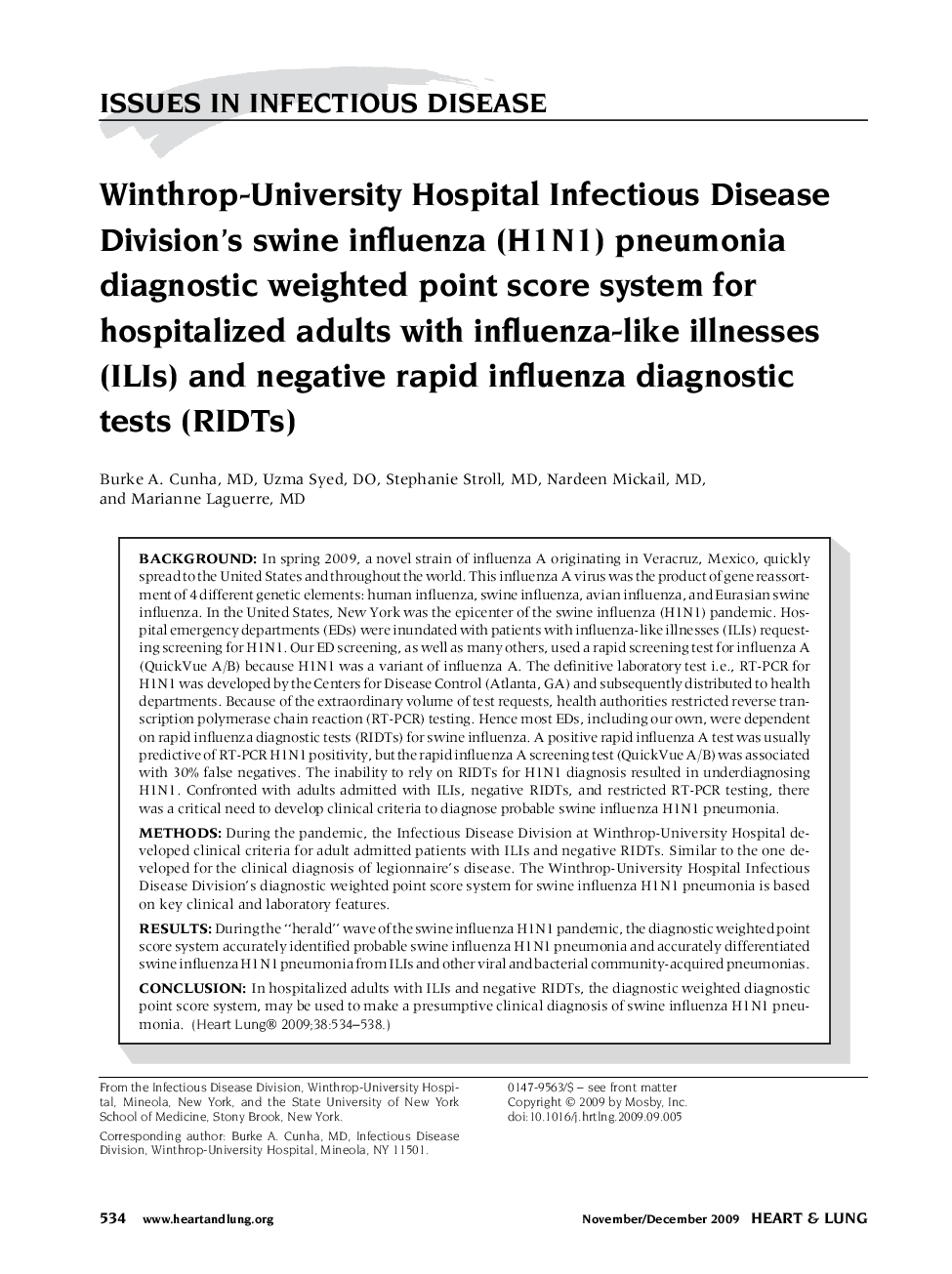| کد مقاله | کد نشریه | سال انتشار | مقاله انگلیسی | نسخه تمام متن |
|---|---|---|---|---|
| 2651664 | 1139475 | 2009 | 5 صفحه PDF | دانلود رایگان |

BackgroundIn spring 2009, a novel strain of influenza A originating in Veracruz, Mexico, quickly spread to the United States and throughout the world. This influenza A virus was the product of gene reassortment of 4 different genetic elements: human influenza, swine influenza, avian influenza, and Eurasian swine influenza. In the United States, New York was the epicenter of the swine influenza (H1N1) pandemic. Hospital emergency departments (EDs) were inundated with patients with influenza-like illnesses (ILIs) requesting screening for H1N1. Our ED screening, as well as many others, used a rapid screening test for influenza A (QuickVue A/B) because H1N1 was a variant of influenza A. The definitive laboratory test i.e., RT-PCR for H1N1 was developed by the Centers for Disease Control (Atlanta, GA) and subsequently distributed to health departments. Because of the extraordinary volume of test requests, health authorities restricted reverse transcription polymerase chain reaction (RT-PCR) testing. Hence most EDs, including our own, were dependent on rapid influenza diagnostic tests (RIDTs) for swine influenza. A positive rapid influenza A test was usually predictive of RT-PCR H1N1 positivity, but the rapid influenza A screening test (QuickVue A/B) was associated with 30% false negatives. The inability to rely on RIDTs for H1N1 diagnosis resulted in underdiagnosing H1N1. Confronted with adults admitted with ILIs, negative RIDTs, and restricted RT-PCR testing, there was a critical need to develop clinical criteria to diagnose probable swine influenza H1N1 pneumonia.MethodsDuring the pandemic, the Infectious Disease Division at Winthrop-University Hospital developed clinical criteria for adult admitted patients with ILIs and negative RIDTs. Similar to the one developed for the clinical diagnosis of legionnaire's disease. The Winthrop-University Hospital Infectious Disease Division's diagnostic weighted point score system for swine influenza H1N1 pneumonia is based on key clinical and laboratory features.ResultsDuring the “herald” wave of the swine influenza H1N1 pandemic, the diagnostic weighted point score system accurately identified probable swine influenza H1N1 pneumonia and accurately differentiated swine influenza H1N1 pneumonia from ILIs and other viral and bacterial community-acquired pneumonias.ConclusionIn hospitalized adults with ILIs and negative RIDTs, the diagnostic weighted diagnostic point score system, may be used to make a presumptive clinical diagnosis of swine influenza H1N1 pneumonia.
Journal: Heart & Lung: The Journal of Acute and Critical Care - Volume 38, Issue 6, November–December 2009, Pages 534–538